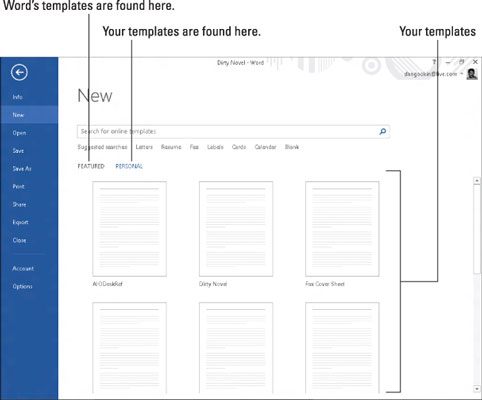
In fact, most built-in styles typically are saved in normal.dotm. Heading styles ordinarily are stored either in the NORMAL template (normal.dotm) or in the document in which they were created, although you can copy styles to (or create them in) your own custom templates. The ListGal.dat file contains the user’s customized gallery of numbered lists (i.e., it includes the lists that came with the program as well as any list styles you’ve created).Ĭ:Documents and Settings\\Application Data\Microsoft \WordĬ:\Users\\AppData\Roaming\Microsoft\Word Unformattted AutoCorrect entries are stored in *.acl (AutoCorrect List) files, located here:Ĭ:\Documents and Settings\\Application Data\Microsoft\OfficeĬ:\Users\\AppData\Roaming\Microsoft\Office (You likely will lose your Quick Parts if that happens, which is why it makes sense to make a copy of the customized file every so often.)Īs mentioned earlier, formatted AutoCorrect entries are storied in the user’s NORMAL template (normal.dotm). If something happens and the user-customized file becomes corrupted, Word creates a new customizable file based on the original template.
Where are microsoft word templates stored windows#
The user copy is located here in Windows Vista and Windows 7:Ĭ:\Users\\AppData\Roaming\Microsoft\Document Building Blocks\1033 The user-specific copy is located here in Windows XP:Ĭ:\Documents and Settings\\Application Data\Microsoft\Document Building Blocks\1033

The original (generic) template is located here in both Windows XP and Vista:Ĭ:\Program Files\Microsoft Office\Office12\Document Parts\1033 One is an original that should never be edited directly the other is a working copy that contains your own custom Quick Parts / Building Blocks. Word 2007 comes with two instances of the Building Blocks.dotx template. The building blocks template is called BuildingBlocks.dotx. Ordinarily you will find the NORMAL template in the following locations:Ĭ:\Documents and Settings\\Application Data\Microsoft\TemplatesĬ:\Users\\AppData\Roaming\Microsoft\TemplatesĮach user’s customized templates typically are stored in the same place as the NORMAL template: Many customizations are stored in the user’s NORMAL template, including his or her default Normal Paragraph style, other styles he or she has created or modified, formatted AutoCorrect entries (unformatted AutoCorrect entries are stored elsewhere - see below), and macros (but not the user’s personalized Quick Access Toolbar or Quick Parts / Building Blocks, which are located in separate files). The NORMAL template (normal.dotm) is the basis for all new documents in Word. In addition, whereas several key Word 2007 files are stored in an “Office12” folder, their Word 2010 counterparts are stored in an “Office14” folder. (For instance, in Word 2010 the generic Building Blocks template is called Built-In Building Blocks.dotx and is stored in C:\Program Files\Microsoft Office\Office14\Document Parts\1033\14 - in all three recent versions of Windows - and the user-specific copy, BuildingBlocks.dotx, is stored in C:\Documents and Settings\\Application Data\Microsoft\Document Building Blocks\1033\14 in Windows XP and in C:\Users\\AppData\Roaming\Microsoft\Document Building Blocks\1033\14 in Vista and Windows 7.
:max_bytes(150000):strip_icc()/001-find-microsoft-word-templates-online-3540420-1fcee3a970a2443f962cc0b86056e7b4.jpg)
Although much of the information is similar to that for Word 2010, there are a few differences.
:max_bytes(150000):strip_icc()/003-find-microsoft-word-templates-online-3540420-9ac50bc2c1234ff2a1ec25fa77263803.jpg)
Also, it applies specifically to Word 2007. Do keep in mind that this list isn’t necessarily exhaustive. What follows is a list of some of the most important files and their typical locations. That way, if something happens to your computer and one of the files is damaged or is inaccessible, you don’t have to re-create all of your customizations from scratch. Because some of these files contain your customizations, you might want to create backup copies from time to time (and perhaps save them to a CD, a USB drive, an external hard drive, or a different computer). It can be helpful to know where key Word 2007 files-such as the NORMAL template and the template where Building Blocks / QuickParts (formerly called AutoText)-are stored in the computer. Note: This post first appeared-in a slightly different form-in my book, Formatting Legal Documents With Microsoft Office Word 2007. Where important Word 2007 files are stored


 0 kommentar(er)
0 kommentar(er)
